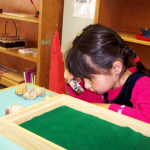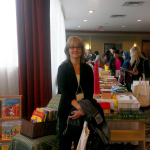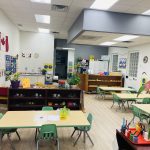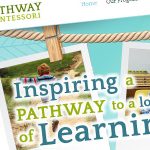“Whoever touches the life of the child touches the most sensitive point of a whole which has roots in the most distant past and climbs toward the infinite future.”

Inspiring a Pathway to a Love of Learning
Our mission is to provide an environment for children in which they are encouraged to explore, create, learn, socialize and celebrate their unique talents.
Looking for an affordable Montessori Program that will fill all your child’s Educational and Developmental needs? Our Calgary and Langley Montessori Children’s Centers are designed to utilize the absorbent mind of children approximately 3 to 6 years old. Pathway Montessori has two fully-equipped Montessori environments run by trained and dedicated teachers.
Montessori’s scientifically-designed learning materials provide young children a way to engage all five senses to build their own independent educational foundation, inspiring a pathway to a love of learning. After viewing the testimonials of proud parents of our past students, you will understand why we are so excited about our programs.
Pathway Montessori Children’s Center & Kindergarten is currently operating out of our Woodbine location in Calgary. We also offer a full day ECS kindergarten program at this location partially funded by Alberta Education. Contact Pathway Montessori Children’s Center in Ft Langley B.C. to inquire about its childcare programs. Please come and tour either location.
The Montessori Approach
The Montessori Method of education is based on the observations and discoveries of Dr. Maria Montessori. She was the first woman physician in Italy, graduating from the Royal University of Rome in 1896. From her many years of observation of children she began to design activities that would help the individual development of each child. Given a carefully prepared learning environment, children work toward perfecting their concentration, inner control, and will. A Montessori program is an individualized program designed to help each child reach his or her fullest potential. The Montessori materials are designed to help develop concentration, coordination and independence, as well as give good experience with academic concepts. The classroom environment allows the child to develop his or her social sense and awareness of others in a natural and unrushed way. Montessori education is education for life.
Our Locations
Calgary (Woodbine)
Address
Pathway Montessori Children's Center 464 A Woodbine Blvd SW Calgary, AB T2W 5H7
Fort Langley
Address
United Church of Langley 9025 Glover Rd. Fort Langley, BC V1M 2R7
Apply Today - Step 1: Schedule a Visit
Interested in enrolling your child in Pathway Montessori? Email our program to schedule a visit to begin the process...
Latest From The Blog










